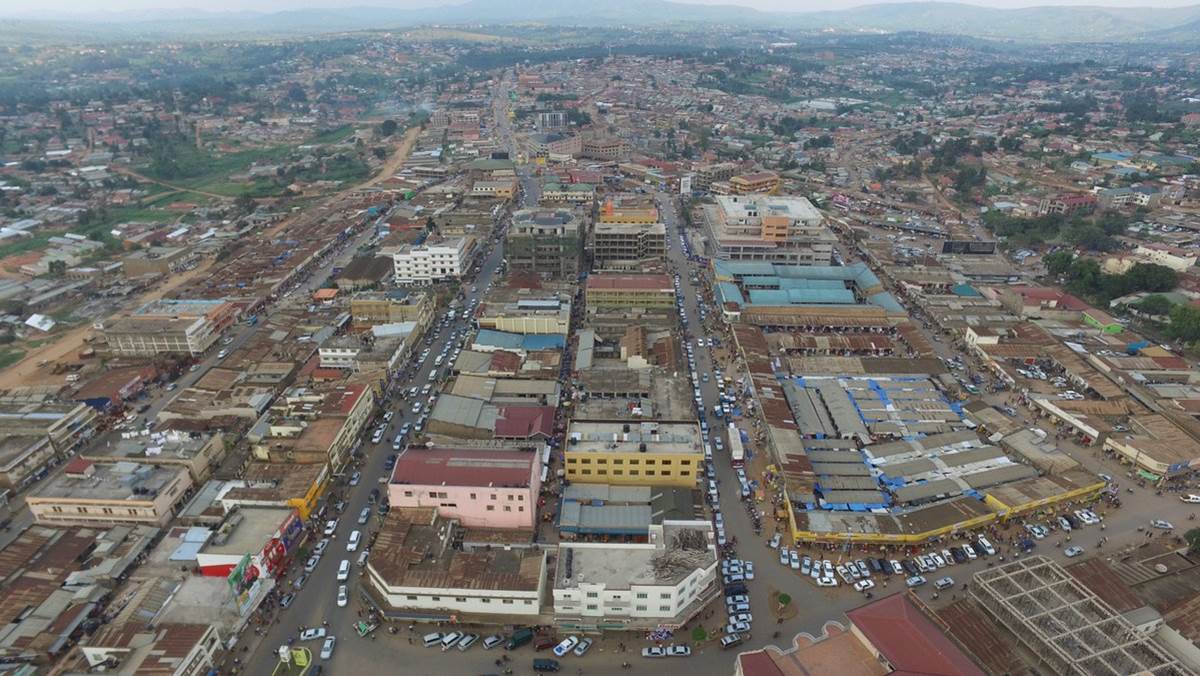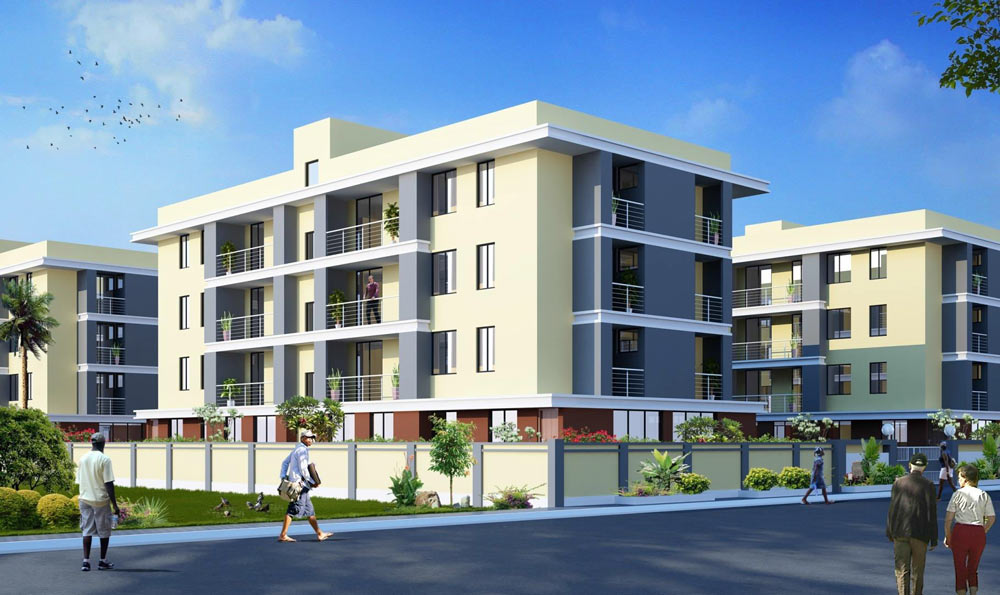As a measure to catch pace with its fast urbanization rates, Uganda recently created 10 new cities from hitherto relatively small regional towns. But the big question that urban experts are asking is whether the new cities will be able to marshal adequate financial resources to build their infrastructure -especially housing- to justify their city status.
In April 2020 the Ugandan parliament unanimously voted for the creation of 15 new cities, adding to Kampala, the capital, 57 years since it was elevated from a municipality at independence.
The new cities created for their strategic location across the regions, will be established over a four year period and run under Local Governments, the ministry of local Government said.
The cities that took effect from July 2020 include Jinja, Mbarara, Fort Portal, Masaka, Mbale, Arua, Gulu, Hoima, Lira and Soroti.
Raphael Magyezi, the minister of local government said the cities were erected as a planned response to the high urbanisation growth rate the country is experiencing. Uganda’s urbanisation rate is currently estimated at 5.4 per cent, per annum.
However, the new establishments are expected to operate in theory, at least for this financial year, as they prepare to transition from municipalities to effective cities with operational structures.
As with all other cities, experts said the new cities present many opportunities for real estate investment, as demand for infrastructure like roads, residential houses, office blocks, commercial buildings and other amenities stands.
They said local governments could then take advantage of Real Estate Investment Trusts (REITs) to augment development of their new cities, by putting up infrastructures and allowing the public to hold shares therein, hence raising more capital to invest in other structures.
“They could do a development REIT and turn it into an income REIT. The local government would have the capacity to develop property and allow people to buy in. This would avail capital for other investments to develop their cities,” said Charles Nsamba, the Capital Markets Authority (CMA) publicist.
A REIT is a collective real estate investment scheme that is listed on the stock exchange to attract capital for further investment.
Normally, these are structured as either development and construction real estate investment schemes or income real estate investment trust schemes. Under the current tax laws, REITs are tax exempt in order to make them attractive.
Nsamba said presently, they are regulated by CMA; although the country does not have any registered or issued REIT on the stock market, despite the existence of regulations.
He said with proper guarantees, pension funds could invest in REITS in the new cities, thus helping them to develop key infrastructure with fewer struggles.
“Pension Funds by their nature have a bit of high risk appetite and are able to take on these REITs depending on the issuers and the guarantees given. If the new cities looked in this direction, it would be instrumental in cutting infrastructure related capital costs,” he said.
He said in Uganda, a lot of focus has been put on the income REITs, especially since a lot of development projects (which would fall under development REITs) are struggling.
“Most properties, especially in Kampala, remain partially vacant which is partly due to a weak property management system, and existing gaps in the real estate market,” Nsamba said.
He said that in Uganda, uptake of development REITs is also limited because most people buy to hold, while other properties are held under family ownership, making decisions hard, to make because they are considered part of the family legacy and wealth.
“REITs are also faced by Inadequate Investor Knowledge, Negative Investor Sentiments, Shallow Investment-Grade Asset Pipeline and Inconsistent Income,” he said.
Vincent Agaba, a prominent real estate developer said little awareness among potential issuers of the REITs, coupled with an intermediary base that is not as engaging, have not helped growth of the product.
“The transactional advisors for instance have to be on board, well versed, trained and equipped to market a REIT, but the question is how well versed are they?” he asked
According to Lazarus Mugabi, the Association of Real Estates Agents (AREA) chief executive officer, it is hard during this COVID -9 periods for individuals to invest in REITs.
He said if local governments are to use REITS for developing their cities, they may have to inject the initial capital and then call for the public to own shares, for them to raise more capital.
He said with REITs, developers in the new cities would have access to relatively lower cost capital, allowing them to develop institutional grade real estate.
He said by selling assets to REITs, property developers would unlock capital that can be more effectively deployed in new development projects.
“REITs would also offer investors liquidity, portfolio diversification and strong corporate governance,” he said.
The Ugandan real estate sector grapples with financing costs because it is capital intensive due to the high cost of land, taxes as well as construction raw materials.
Last year, Finance minister, Matia Kasaija challenged stake holders in the real estate’s sector to improve locally available building material through research, in order to reduce the cost of housing in the country.
Kasaija said locally available materials such as clay, sand and timber could be scientifically improved to reduce the cost of housing, as most of the high end materials are currently just imported.
He said reducing the cost of materials would in turn reduce the disparity between the cost of houses and their affordability, as government moves to ensure that all Ugandans have access to decent housing.
He said improving building technology must be done as soon as possible, to avert the rising housing shortage in the country, expected to hit 8 million this year, if critical measures to address the problem are not taken.
“Right now we have a housing deficit of over 2.1 million units, and the available houses are very expensive. Our population is estimated to reach 64 million by 2040, and if we do not act now, we shall lack accommodation for our people,” Kasaija said.
With the creation of new cities, Mugabi said demand for housing is expected to rise even further, as more people move from the country side to look for new opportunities in the cities.
He said reducing the cost of investment using cheaply available high grade local materials would make REITs feasible investment vehicles and attract more investors
REITs were created in the United States in 1960, to give investors the opportunity to invest in large-scale, diversified portfolios of income-producing real estate through the purchase and sale of liquid securities.
At the time, they consisted mainly of mortgage companies which used them as funding vehicles in land development and construction deals.
In Africa, Ghana was the first to implement the REIT structure in 1994, followed by Nigeria in 2008, South Africa in 2013 and Kenya in 2015.
In Kenya, the first REIT was approved by the Capital Markets Authority in October 2015, and has been the only operational REIT to date, while Uganda has none so far.
Of all African REIT markets, only South Africa has registered significant growth with 23 active REITs valued at US$26.1b and a considerable number of global REIT giants registered on the Johannesburg securities exchange.
Historically REITs have provided high dividends plus the potential for moderate, long-term capital appreciation for investors, in addition to offering investors liquidity, portfolio diversification and strong corporate governance.













